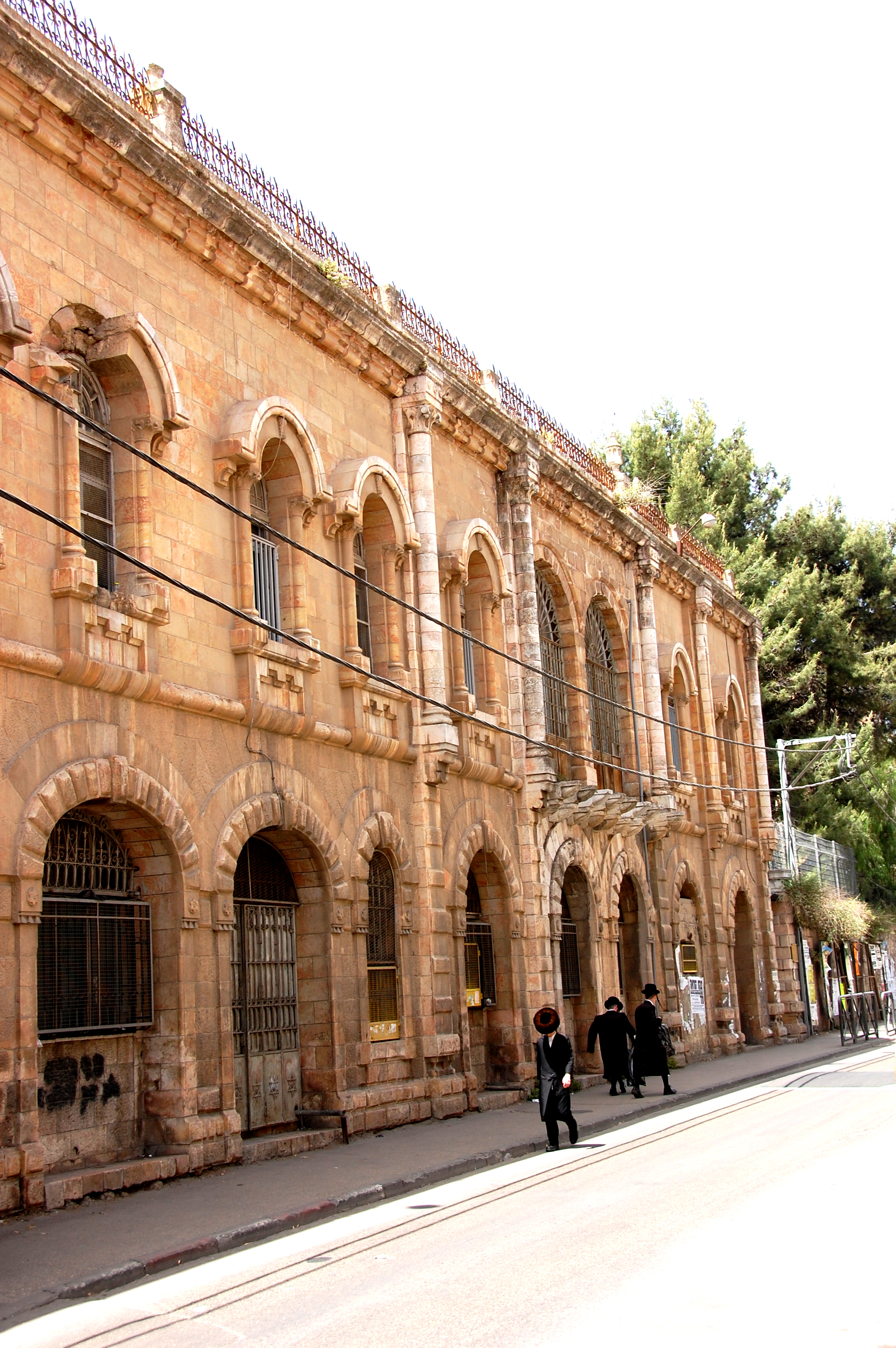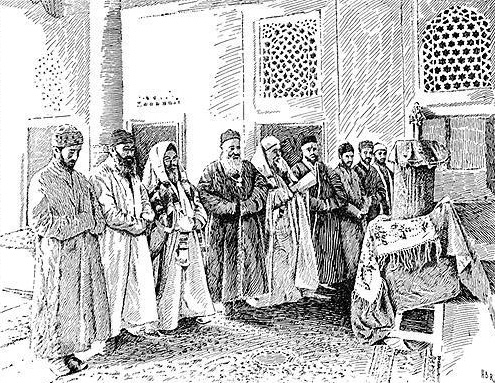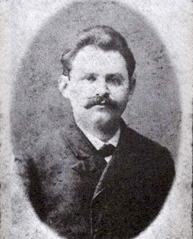|
Bukharim
The Bukharan Quarter ( he, שכונת הבוכרים, ''Shkhunat HaBukharim''), also HaBukharim Quarter or Bukharim Quarter, is a neighborhood in the center of Jerusalem, Israel. The neighborhood was established by Bukharan Jews of the Old Yishuv. The neighborhood also anchored communities from modern-day Afghanistan and the Iranian city of Meshad. It belonged to the early Jewish neighborhoods built outside the Old City of Jerusalem as part of a process which began in the 1850s. Today most of the residents are Haredi Jews. The quarter borders Tel Arza on the west, the Shmuel HaNavi neighborhood on the north, Arzei HaBira on the east, and Geula on the south. History The first immigrants of Bukharan Jews from Russian Turkestan (Central Asia) settled in Jerusalem in the 1870s and 1880s. In 1890, seven members of the Bukharan Jewish community formed the Hovevei Zion Association of the Jewish communities of Bukhara, Samarkand and Tashkent. In 1891, the association bought land ... [...More Info...] [...Related Items...] OR: [Wikipedia] [Google] [Baidu] |
Bukharan Jews
Bukharan Jews ( Bukharian: יהודיאני בוכארא/яҳудиёни Бухоро, ''Yahudiyoni Bukhoro''; he, יהודי בוכרה, ''Yehudey Bukhara''), in modern times also called Bukharian Jews ( Bukharian: יהודיאני בוכארי/яҳудиёни бухорӣ, ''Yahudiyoni Bukhorī''; he, יהודים בוכרים, ''Yehudim Bukharim''), are an ethnoreligious Jewish sub-group of Central Asia that historically spoke Bukharian, a Judeo-Tajik dialect of the Tajik language, in turn a variety of the Persian language. Their name comes from the former Central Asian Emirate of Bukhara (now primarily Uzbekistan), which once had a sizable Jewish population. Bukharan Jews comprise Persian-speaking Jewry along with the Jews of Iran, Afghanistan, and the Caucasus Mountains. Since the dissolution of the Soviet Union, the great majority have immigrated to Israel or to the United States while others have immigrated to Europe or Australia. Bukharan Jews are Mizrahi Jew ... [...More Info...] [...Related Items...] OR: [Wikipedia] [Google] [Baidu] |
Geula
Geula ( he, גאולה lit. ''Redemption'') is a neighborhood in the center of Jerusalem, populated mainly by Haredi Jews. Geula is bordered by Zikhron Moshe and Mekor Baruch on the west, the Bukharim neighborhood on the north, Mea Shearim on the east and the Jerusalem city center on the south. History Geula was established in 1927–28. It was originally a mixed neighborhood of secular and religious Jews. The British consul to Jerusalem, James Finn, built his home in the area in 1855, employing Jewish labor. It was the third building constructed outside the walls of the Old City.Jerusalem neighborhoods , Eiferman Properties Ltd. Geula was developed by banker Avraham Chasidoff (founder of Israel Discount Bank) who named the main street after his eldest daughter, Geul [...More Info...] [...Related Items...] OR: [Wikipedia] [Google] [Baidu] |
Shmuel HaNavi (neighborhood)
Shmuel HaNavi ( he, שיכון שמואל הנביא, ''Shikun Shmuel HaNavi'', lit. "Samuel the Prophet neighborhood") is a neighborhood in north-central Jerusalem. It is bordered by the Sanhedria Cemetery to the north, Maalot Dafna to the east, Arzei HaBira to the south, and the Bukharan Quarter to the west. It is named after Shmuel HaNavi (Samuel the Prophet) Street, which runs along its western border and is the main road leading to the tomb of Samuel the prophet (Hebrew: ''Shmuel HaNavi'') just outside Jerusalem's city limits. Background The first home to be erected on what would become known as Shmuel HaNavi Street was the Mandelbaum House, a large, three-story house built by Simcha Torever-Mandelbaum, a Jerusalem textile merchant, in 1927. Mandelbaum chose the location at the eastern end of the street, facing Sheikh Jarrah, with a desire to expand the northern boundary of Jewish Jerusalem at that time. In 1941, the Jerusalem Biblical Zoo, initially a small children's zoo o ... [...More Info...] [...Related Items...] OR: [Wikipedia] [Google] [Baidu] |
Tel Arza
Tel Arza ( he, תל ארזה}) is a Hareidi neighborhood in northern Jerusalem. It is bordered by Ezrat Torah on the west, Shikun Chabad on the south, the Bukharim quarter on the east, and Sanhedria on the north. Tel Arza was established in 1931, as part of the expansion experienced in the Old Yishuv while recovering from the 1929 Palestine riots. Its name is taken from the Mishna,Tractate Yevamos Yevamot ( he, יבמות, "Brother's Widow", also pronounced Yevamos, or Yavmus) is a tractate of the Talmud that deals with, among other concepts, the laws of Yibbum (, loosely translated in English as levirate marriage), and, briefly, with conve ... 16 where it is described as a place where Jews were murdered. References {{coord, 31, 47, 42, N, 35, 12, 55, E, display=title Neighbourhoods of Jerusalem ... [...More Info...] [...Related Items...] OR: [Wikipedia] [Google] [Baidu] |
Bukhara 555
Bukhara ( Uzbek: /, ; tg, Бухоро, ) is the seventh-largest city in Uzbekistan, with a population of 280,187 , and the capital of Bukhara Region. People have inhabited the region around Bukhara for at least five millennia, and the city has existed for half that time. Located on the Silk Road, the city has long served as a center of trade, scholarship, culture, and religion. The mother tongue of the majority of people of Bukhara is Tajik, a dialect of the Persian language, although Uzbek is spoken as a second language by most residents. Bukhara served as the capital of the Samanid Empire, Khanate of Bukhara, and Emirate of Bukhara and was the birthplace of scholar Imam Bukhari. The city has been known as "Noble Bukhara" (''Bukhārā-ye sharīf''). Bukhara has about 140 architectural monuments. UNESCO has listed the historic center of Bukhara (which contains numerous mosques and madrasas) as a World Heritage Site. Names The exact name of the city of Bukhara in ancient ... [...More Info...] [...Related Items...] OR: [Wikipedia] [Google] [Baidu] |
Israel Ministry Of Foreign Affairs
The Israeli Ministry of Foreign Affairs ( he, מִשְׂרַד הַחוּץ, Romanization of Hebrew, translit. ''Misrad HaHutz''; ar, وزارة الخارجية الإسرائيلية) is one of the most important ministries in the Cabinet of Israel, Israeli government. The ministry's role is to implement Israel's foreign policy, and promote economic, cultural, and scientific relations with other countries. The Ministry of Foreign Affairs is located in the government complex in Givat Ram, Jerusalem. Yair Lapid currently holds the Foreign Ministry post. History In the early months of 1948, when the government of the future State of Israel was being formed, the Ministry of Foreign Affairs was housed in a building in the abandoned German Templer colonies in Palestine, Templer village of Sarona (colony), Sarona, on the outskirts of Tel Aviv. Moshe Sharett, formerly head of the Political Department of the Jewish Agency, was placed in charge of foreign relations, with Walter Eytan a ... [...More Info...] [...Related Items...] OR: [Wikipedia] [Google] [Baidu] |
Hovevei Zion
Hovevei Zion ( he, חובבי ציון, lit. ''hose who areLovers of Zion''), also known as Hibbat Zion ( he, חיבת ציון), refers to a variety of organizations which were founded in 1881 in response to the Anti-Jewish pogroms in the Russian Empire and were officially constituted as a group at a conference led by Leon Pinsker in 1884. The organizations are now considered the forerunners and foundation-builders of modern Zionism. Many of the first groups were established in Eastern European countries in the early 1880s with the aim to promote Jewish immigration to Palestine, and advance Jewish settlement there, particularly agricultural. Most of them stayed away from politics. History Since the first centuries of the Common Era most Jews had lived outside Palestine, although there had been a constant presence of Jews there as well. According to the Bible and Judaism, Eretz Israel was promised to the Jews by God. The Jewish diaspora began in 586 BCE during the Babylonian ... [...More Info...] [...Related Items...] OR: [Wikipedia] [Google] [Baidu] |
Samarkand
fa, سمرقند , native_name_lang = , settlement_type = City , image_skyline = , image_caption = Clockwise from the top:Registan square, Shah-i-Zinda necropolis, Bibi-Khanym Mosque, view inside Shah-i-Zinda, Sher-Dor Madrasah in Registan, Timur's Mausoleum Gur-e-Amir. , image_alt = , image_flag = , flag_alt = , image_seal = Emblem of Samarkand.svg , seal_alt = , image_shield = , shield_alt = , etymology = , nickname = , motto = , image_map = , map_alt = , map_caption = , pushpin_map = Uzbekistan#West Asia#Asia , pushpin_map_alt = , pushpin_mapsize = 300 , pushpin_map_caption = Location in Uzbekistan , pushpin_label_position = , pushpin_relief = 1 , coordinates = , coor_pinpoint = , co ... [...More Info...] [...Related Items...] OR: [Wikipedia] [Google] [Baidu] |
Conrad Schick
Conrad Schick (1822–1901) was a German architect, archaeologist and Protestant missionary who settled in Jerusalem in the mid-nineteenth century.Perry & Yodim (2004) For many decades he was head of the "House of Industry" at the Christ Church, which was the institute for vocational training of the London Society for Promoting Christianity Amongst the Jews. Biography Conrad Schick was born in Bitz, Kingdom of Württemberg, Germany. At the age of 24, after completing his studies in Basel, he settled in Palestine in October 1846. conradschick.wordpress.com The St. Chrischona Pilgrim Mission at Bettingen sent him out as missionary. When Schick died in J ... [...More Info...] [...Related Items...] OR: [Wikipedia] [Google] [Baidu] |
Tashkent
Tashkent (, uz, Toshkent, Тошкент/, ) (from russian: Ташкент), or Toshkent (; ), also historically known as Chach is the capital and largest city of Uzbekistan. It is the most populous city in Central Asia, with a population of 2,909,500 (2022). It is in northeastern Uzbekistan, near the border with Kazakhstan. Tashkent comes from the Turkic ''tash'' and ''kent'', literally translated as "Stone City" or "City of Stones". Before Islamic influence started in the mid-8th century AD, Tashkent was influenced by the Sogdian and Turkic cultures. After Genghis Khan destroyed it in 1219, it was rebuilt and profited from the Silk Road. From the 18th to the 19th century, the city became an independent city-state, before being re-conquered by the Khanate of Kokand. In 1865, Tashkent fell to the Russian Empire; it became the capital of Russian Turkestan. In Soviet times, it witnessed major growth and demographic changes due to forced deportations from throughout the Sov ... [...More Info...] [...Related Items...] OR: [Wikipedia] [Google] [Baidu] |
Neo-Gothic
Gothic Revival (also referred to as Victorian Gothic, neo-Gothic, or Gothick) is an architectural movement that began in the late 1740s in England. The movement gained momentum and expanded in the first half of the 19th century, as increasingly serious and learned admirers of the neo-Gothic styles sought to revive medieval Gothic architecture, intending to complement or even supersede the neoclassical styles prevalent at the time. Gothic Revival draws upon features of medieval examples, including decorative patterns, finials, lancet windows, and hood moulds. By the middle of the 19th century, Gothic had become the preeminent architectural style in the Western world, only to fall out of fashion in the 1880s and early 1890s. The Gothic Revival movement's roots are intertwined with philosophical movements associated with Catholicism and a re-awakening of high church or Anglo-Catholic belief concerned by the growth of religious nonconformism. Ultimately, the "Anglo-Catholicism" tra ... [...More Info...] [...Related Items...] OR: [Wikipedia] [Google] [Baidu] |
Neo-Moorish
Moorish Revival or Neo-Moorish is one of the exotic revival architectural styles that were adopted by architects of Europe and the Americas in the wake of Romanticist Orientalism. It reached the height of its popularity after the mid-19th century, part of a widening vocabulary of articulated decorative ornament drawn from historical sources beyond familiar classical and Gothic modes. Neo-Moorish architecture drew on elements from classic Moorish architecture and, as a result, from the wider Islamic architecture. In Europe The "Moorish" garden structures built at Sheringham Hall, Norfolk, ca. 1812, were an unusual touch at the time, a parallel to chinoiserie, as a dream vision of fanciful whimsy, not meant to be taken seriously; however, as early as 1826, Edward Blore used Islamic arches, domes of various size and shapes and other details of Near Eastern Islamic architecture to great effect in his design for Alupka Palace in Crimea, a cultural setting that had already been ... [...More Info...] [...Related Items...] OR: [Wikipedia] [Google] [Baidu] |









